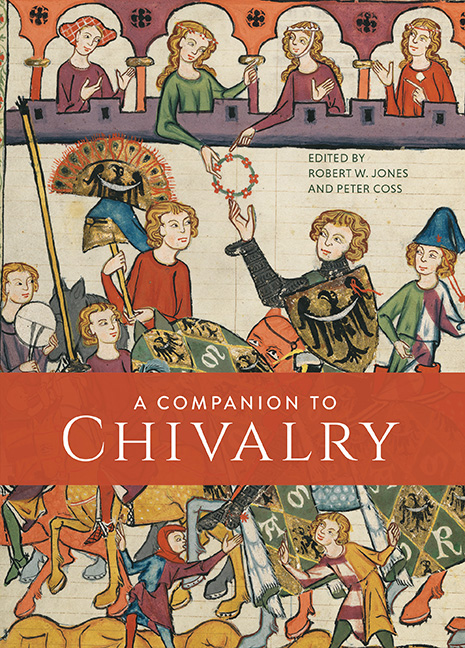Book contents
- Frontmatter
- Contents
- List of Illustrations
- List of Contributors
- Introduction
- 1 The Origins and Diffusion of Chivalry
- 2 The Organisation of Chivalric Society
- 3 The Secular Orders: Chivalry in the Service of the State
- 4 The Military Orders
- 5 Marshalling the Chivalric Elite for War
- 6 Chivalric Violence
- 7 Chivalry in the Tournament and Pas d'Armes
- 8 Heraldry and Heralds
- 9 Arms and Armour
- 10 Constructing Chivalric Landscapes: Aristocratic Spaces Between Image and Reality
- 11 Gendered Chivalry
- 12 Chivalric Literature
- 13 Manuals of Warfare and Chivalry
- 14 The End of Chivalry? Survivals and Revivals of the Tudor Age
- 15 Chivalric Medievalism
- Select Bibliography
- Acknowledgements
- Index
11 - Gendered Chivalry
Published online by Cambridge University Press: 24 October 2019
- Frontmatter
- Contents
- List of Illustrations
- List of Contributors
- Introduction
- 1 The Origins and Diffusion of Chivalry
- 2 The Organisation of Chivalric Society
- 3 The Secular Orders: Chivalry in the Service of the State
- 4 The Military Orders
- 5 Marshalling the Chivalric Elite for War
- 6 Chivalric Violence
- 7 Chivalry in the Tournament and Pas d'Armes
- 8 Heraldry and Heralds
- 9 Arms and Armour
- 10 Constructing Chivalric Landscapes: Aristocratic Spaces Between Image and Reality
- 11 Gendered Chivalry
- 12 Chivalric Literature
- 13 Manuals of Warfare and Chivalry
- 14 The End of Chivalry? Survivals and Revivals of the Tudor Age
- 15 Chivalric Medievalism
- Select Bibliography
- Acknowledgements
- Index
Summary
Born into a kingdom where the king prohibited female inheritance, the eponymous heroine of the thirteenth–century Old French romance Silence was raised as a boy, much to the frustration of Nature and satisfaction of Nurture. Silence's education in masculine courtly behaviour and in the arts of war as her father's only heir was so successful that ‘He (sic) [became] … a valiant and noble knight;/ no king or count was ever better’ (‘Chevaliers est vallans et buens,/ Mellor n'engendra rois ne cuens’). Silence's true gender was only unmasked when he/she captured the prophet Merlin, who could only be seized if tricked by a woman. At the end of the tale, Nature recovered ‘her rights’ (‘sa droiture’) over Silence's body and restored her feminine appearance, whereupon Silence, who became known as Silentia rather than Silentius, abandoned her masculine knightly attire and married the king.
With its focus on violence, power and knighthood, chivalry appears first and foremost as a masculine social ideal in both medieval literature and life. Carrying arms and engaging personally in knightly forms of combat were male preserves; it was unnatural for women to participate in them. As Nature admonished Silence, before she reassumed her true gender:
‘It's a very nasty thing you're doing to me, leading this sort of life.
You [as a woman] have no business going off into the forest, jousting, hunting, shooting off arrows.
Desist from all of this!’ …
‘Go to a chamber and learn to sew!’
Yet the centrality of aristocratic ladies to courtly life and lordship allowed women to participate in chivalric culture in ways that were not entirely divorced from those of their male kin. Although women often featured in romances as lovers or unattainable figures for whom aristocratic men performed various feats of arms, they also appeared as agents, rather than as purely passive recipients of male affection or admiration. This chapter considers how far chivalric practices, values and modes of conduct were gendered, and explores how far female experiences differed from those of men between the twelfth and early fourteenth centuries. It adopts a broad definition of chivalry that encompasses the lifestyles and ideals of behaviour of those persons who belonged to the aristocracy. It also recognises that chivalric literature was interwoven with gendered ideas and stereotypes that reflected many of the tenets of elite society.
- Type
- Chapter
- Information
- A Companion to Chivalry , pp. 219 - 240Publisher: Boydell & BrewerPrint publication year: 2019



